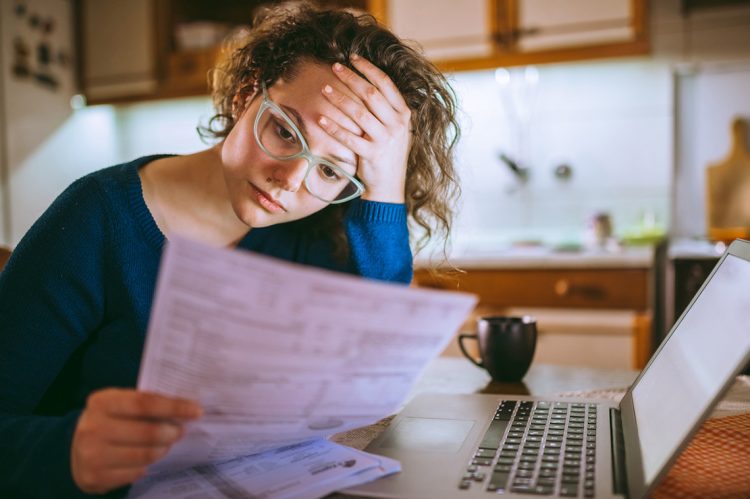The high cost of housing isn’t just relegated to homeowners, with renters feeling the sting of rising prices. In fact, more than 8 million (13.17%) adults live in a household not caught up on rent payments, according to a new report from LendingTree.
LendingTree’s new report, based on U.S. Census Bureau Household Pulse Survey data, analyzes which states are home to the most people behind on rent, as well as the states with the most people living rent-free. The report found that while millions of people are behind on their rent, about 3.6 million adults (5.81%) are living in households not being charged rent.
Key highlights:
- New York has the largest number of renters not caught up on their payments, at 20.52% of their 5.1 million renters. In contrast, 75.81% renters are caught up on their rent, and 2.73% don’t pay rent.
- Nevada comes in second: of their 768,883 renters, 19.68% are not caught up on their rent. 74.99%, however, are caught up on their rent, and 3.71% don’t pay rent.
- Lastly is Louisiana, of which 18.97% of its 525,160 renters are not caught up on their rent. Meanwhile, 68.89% renters are caught up on their rent, and 10.18% don’t pay rent.
- The states with the largest share of adults behind on rent payments are New York, Nevada and Louisiana. Across these three states, an average of 19.72% of adult renters are living in households behind on rent payments. In the states with the smallest share of renters not caught up on rent — Kansas, Nebraska and Arkansas — that figure is 6.23%.
- Mississippi has the largest share of people who don’t pay rent, at 14.9% of their 511,819 renters. Of those who pay rent, 66.63% are caught up and 16.89% are not.
- Second is West Virginia: of their 188,382, 12.76% don’t pay rent. Of renters who do pay, 73.17% are caught up and 13.77% are not.
- Lastly is Alaska, of which 11.96% of their 128,960 don’t pay rent. Of those who pay rent, 75.87% are caught up and 11.84% are not.
- The percentages in these three states are more than 11 percentage points higher than in the states with the smallest share of renters living rent-free—Colorado, Indiana and Utah—where the average is 1.92%.
- Over the past year, 53.03% of renters across the U.S. saw their rent increase, while 36.91% saw no increase and 1.75% saw a decline. The majority of those who saw their rent payments jump reported increases between $100 and $249 a month.
Major takeaway:
“Conversations about today’s housing market are often dominated by talk of how high home prices and mortgage rates have made becoming a homeowner considerably more challenging — but buying isn’t the only thing that’s become more difficult in recent years,” said Jacob Channel, LendingTree’s senior economist and author of the report.
“In the same way home prices have risen since the start of the pandemic, so too have rent costs. And while renting is typically cheaper than buying (at least in the short term), that doesn’t mean renting is always easy,” continued Channel. “For this reason, focusing solely on ways to make homebuying easier isn’t enough to alleviate the problems facing today’s housing market. Instead, we must consider ways to make renting easier, from building more affordable rental units to passing more laws that restrict predatory rent hikes. Otherwise, we would ignore the tens of millions of Americans who rent.”
Concluded Channel, “Keep in mind that those living rent-free aren’t adult children living at home with parents who don’t charge rent. Instead, they’re living in households where nobody owns the home or is being charged rent. For example, people in these types of households could be caretakers provided their home rent-free in exchange for their services. In other words, people in these types of households aren’t living rent-free because they’re behind on rent; rather, they’re living rent-free because their household isn’t being charged rent.”
For the full report, click here.












